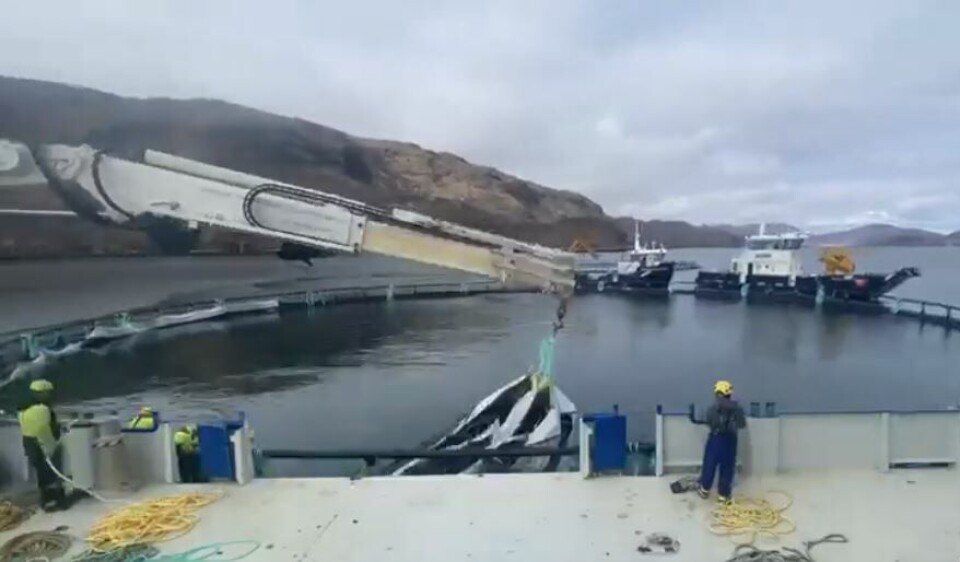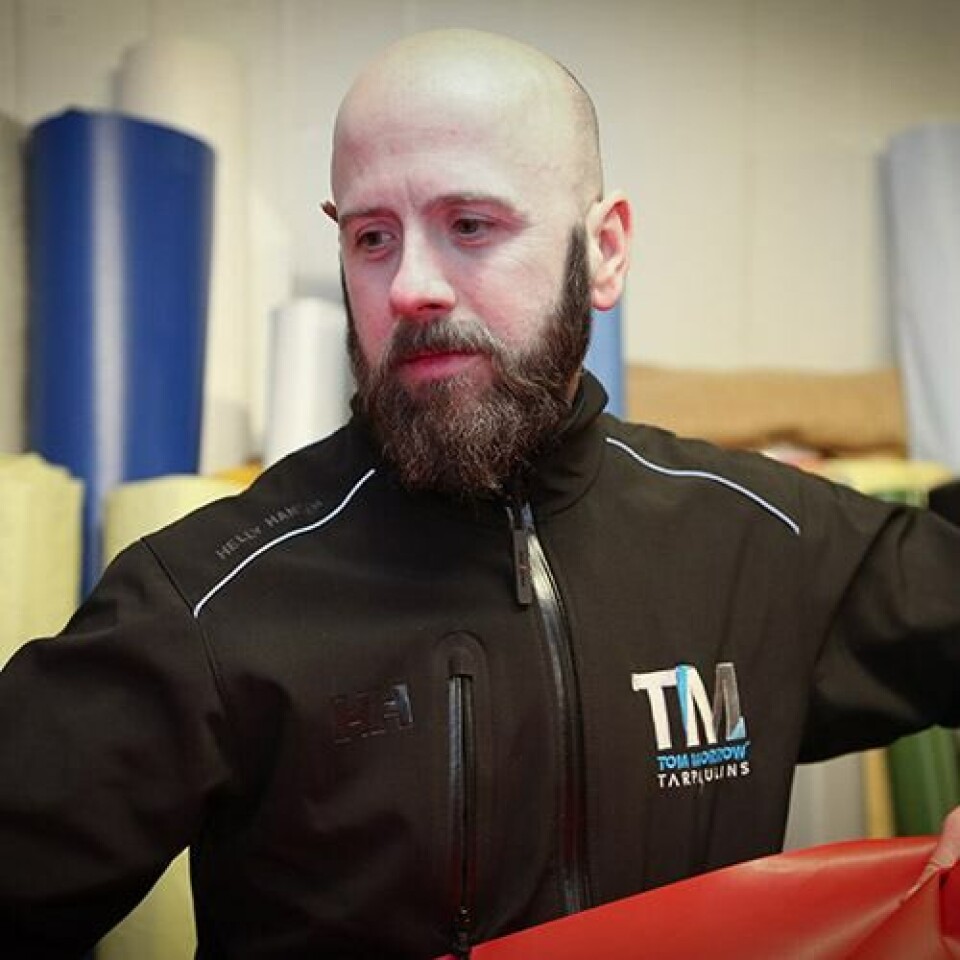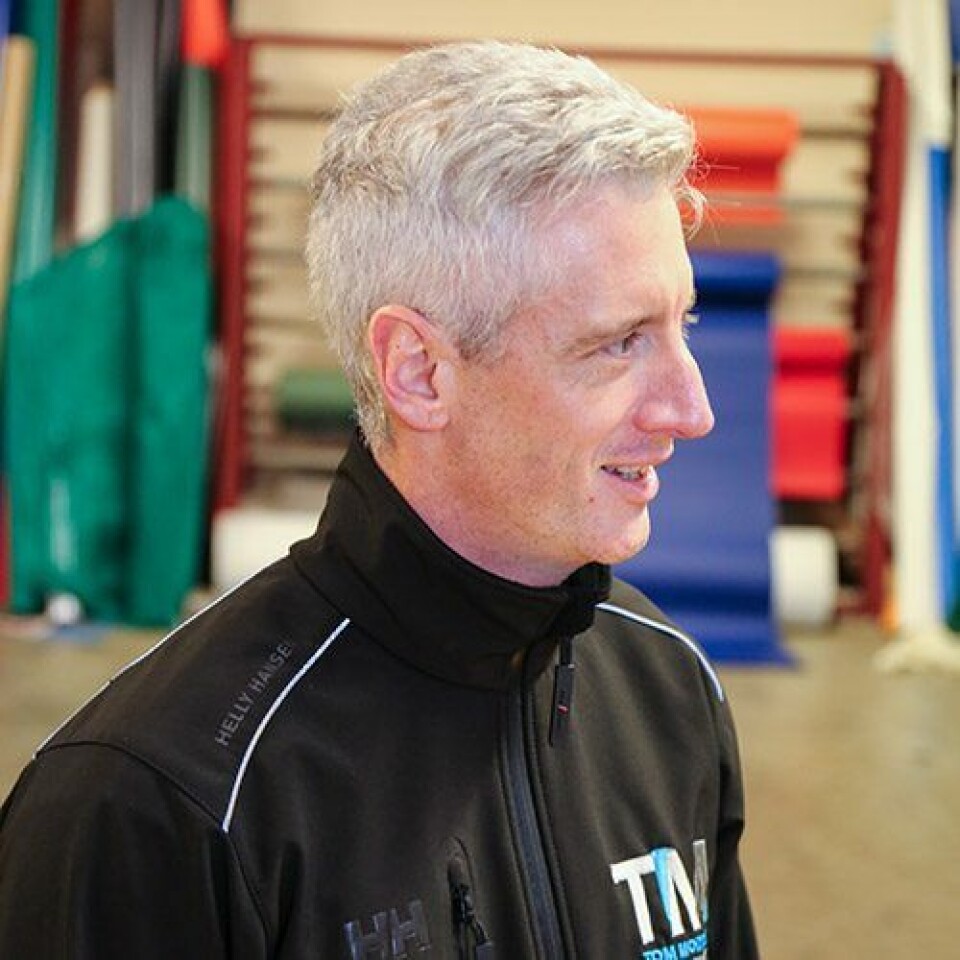
Sew quick: tarp maker wins race to make lice skirts
The directors of a Scottish fish farming supplier have praised the dedication of their workforce for ensuring lice skirts for Mowi’s ground-breaking 160-metre pens were delivered on time.
Marcus Sanctuary and Gary Cunningham, the directors of Tom Morrow Tarpaulins in Inverness, said the company hit its deadline with just four hours to spare.
“I count myself very lucky to have lads that will all rally together when needed to hit a deadline. We all worked 18 days straight 12-15hr days, tired and grumpy near the end but pulled it off,” said Sanctuary in a post on LinkedIn.
Larger cages
Mowi is the first salmon farmer in Scotland to take advantage of rule changes that allow producers to use larger cages. Previously, the maximum circumference allowed for pens was 120m.
Ten 160m cages have been installed at Mowi’s Seaforth site on Lewis, along with bespoke lice screens from Tom Morrow, and the pens have now been stocked.

Longer timescales
“There are many challenges to be met with making skirts like these,” said Sanctuary. “Design, material sourcing and suitable manufacturing processes are among a few. Obviously, bigger products mean longer timescales, which we always do our best to minimise.
“We like to sit down with the clients and find out exactly what’s required before undertaking jobs like this as we find every producer or site has their own ideas and requirements. So, we make sure we get everything right at the drawing board before production starts.”
Not only were the skirts the biggest the company has made, but they were also made with a new marine specification material which Sanctuary says will extend the lifespan of the equipment.
The material is an innovation introduced by Cunningham and Sanctuary, who have been working at the tarpaulin company for 24 and 22 years respectively and got the chance to buy the firm around four years ago.

A long journey
“As directors, we have the freedom to explore innovative materials and production processes that would improve our products and take them to new levels that meet and outlast customer requirements,” said Cunningham.
“We felt that for our offshore and aquaculture sectors we could create a better material that lasts longer in the water and we have now achieved this with our marine spec material. Working closely with our suppliers on this for what feels like quite a long journey we have come up with something that just works and will outperform any of the more widely used materials out there in terms of strength, wear and degradation in marine environments.”
Industry ‘heading for larger pens’
Most enquiries the company gets for lice skirts are still for 120m pens, “but we understand the industry is heading towards larger pens”, added Sanctuary.
“We will always move with the aquaculture industry and do all we can to work with producers to create opportunities in the future.”
As well as praising staff, the directors thanked Seaforth farm manager Don Macleod, who sent the company a time-lapse video of one of the lice skirts being installed.
“We couldn’t visit the site because of Covid restrictions, and we don’t have room to lay the skirts out at our premises, so it was nice to see one going into the water,” said Sanctuary.























































